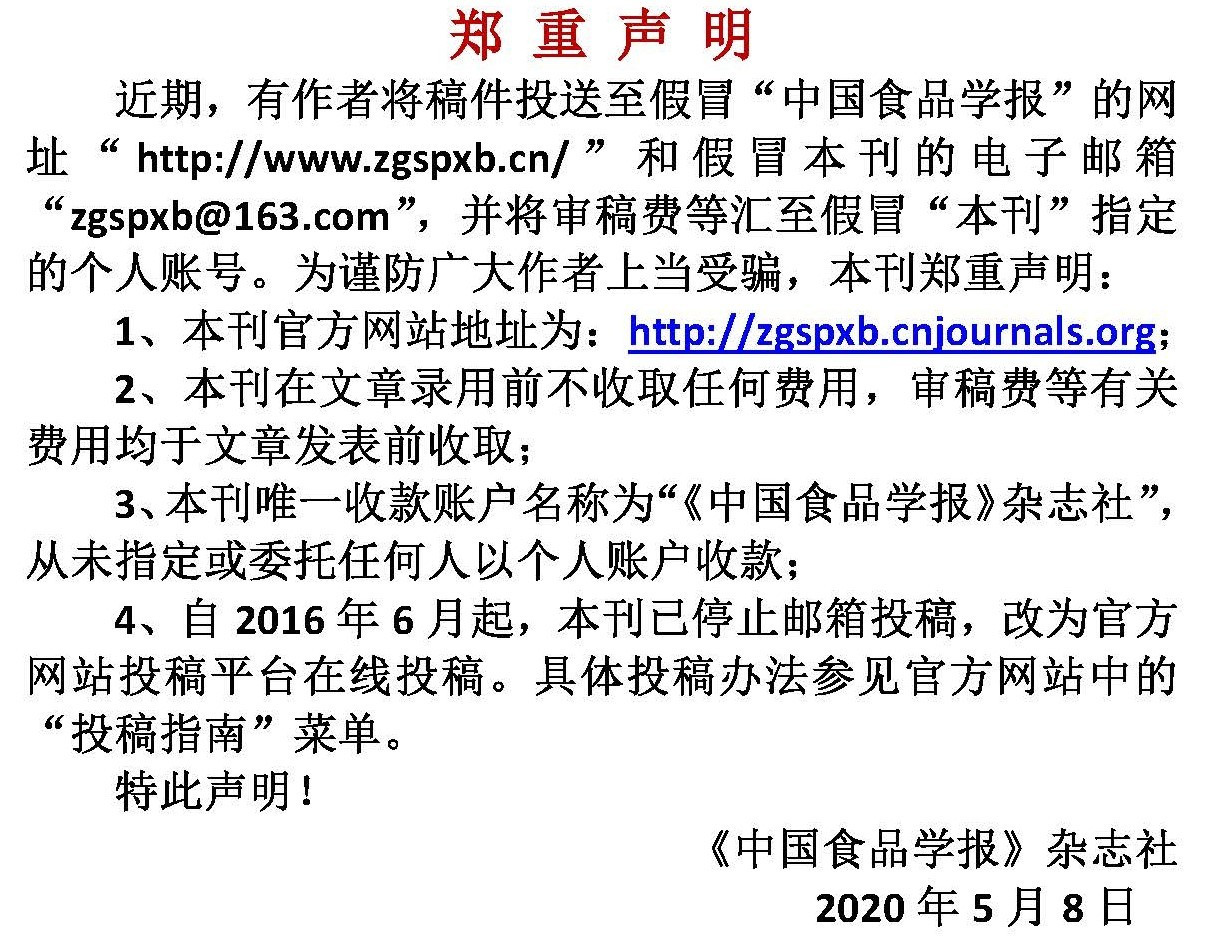加热-超声-pH偏移联合改性大豆球蛋白纳米颗粒的制备及稳定性研究
作者:
作者单位:
(沈阳农业大学食品学院 沈阳 110866)
基金项目:
辽宁省教育厅科学研究经费项目(LSNQN 202011);辽宁省科学技术计划项目创新能力提升联合基金项目(2021-NLTS-11-02)
Studies on Preparation and Stability of SG Nanoparticles Modified by Heating-Ultrasound-pH Shifting
Author:
Affiliation:
(College of Food Science, Shenyang Agricultural University, Shenyang 110866)
引用本文
李春强,刘俊,赵虹霏,谢文茹,邵俊花,张铭芸.加热-超声-pH偏移联合改性大豆球蛋白纳米颗粒的制备及稳定性研究[J].中国食品学报,2023,23(10):178-194
复制分享
文章指标
- 点击次数:337
- 下载次数: 271
- HTML阅读次数: 386
历史
- 收稿日期:2022-10-14
- 在线发布日期: 2023-12-04
文章二维码

版权所有 :《中国食品学报》杂志社 京ICP备09084417号-4
地址 :北京市海淀区阜成路北三街8号9层 邮政编码 :100048
电话 :010-65223596 65265375 电子邮箱 :chinaspxb@vip.163.com
技术支持:北京勤云科技发展有限公司
地址 :北京市海淀区阜成路北三街8号9层 邮政编码 :100048
电话 :010-65223596 65265375 电子邮箱 :chinaspxb@vip.163.com
技术支持:北京勤云科技发展有限公司
请使用 Firefox、Chrome、IE10、IE11、360极速模式、搜狗极速模式、QQ极速模式等浏览器,其他浏览器不建议使用!

